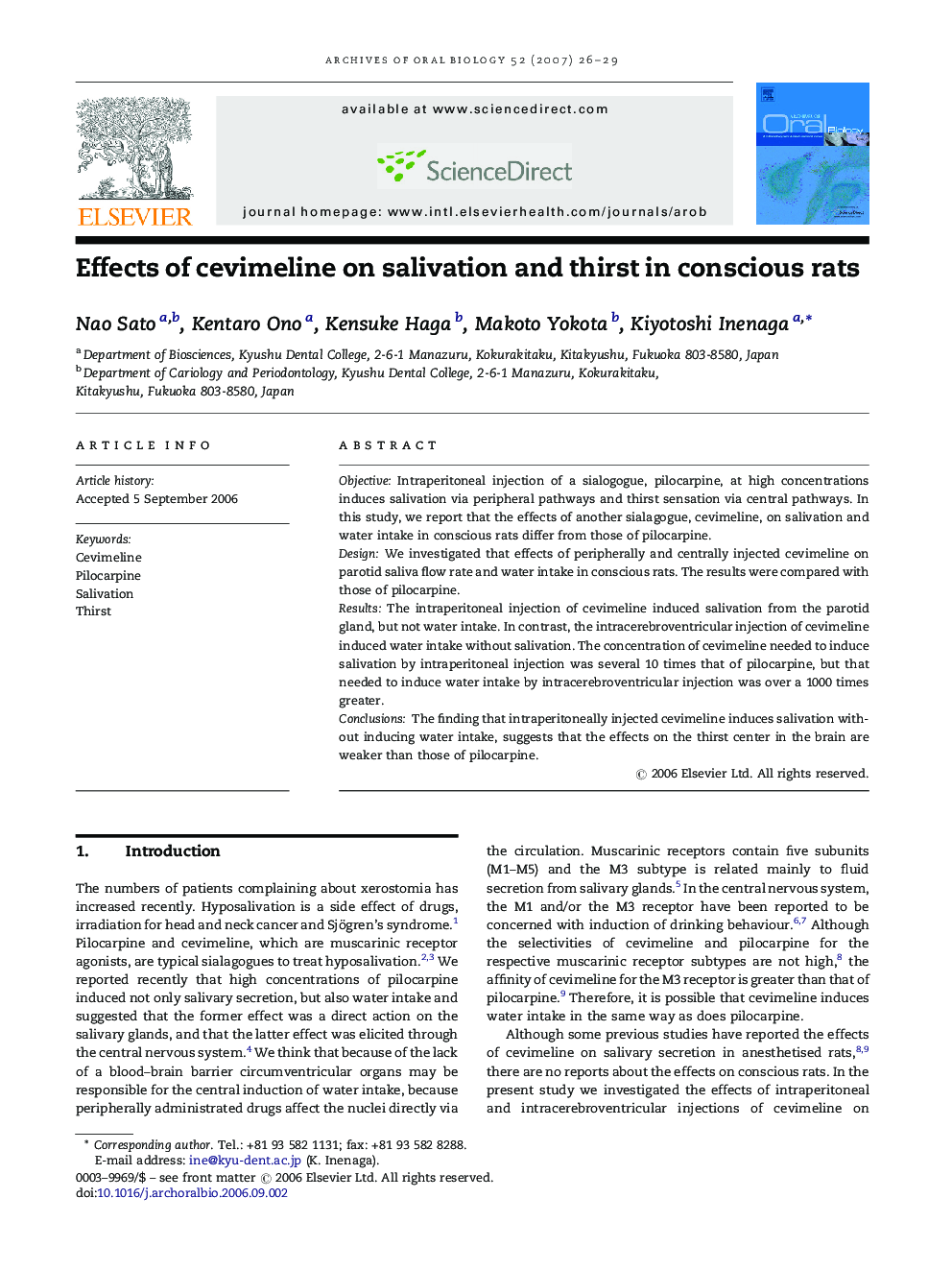| Article ID | Journal | Published Year | Pages | File Type |
|---|---|---|---|---|
| 3121776 | Archives of Oral Biology | 2007 | 4 Pages |
ObjectiveIntraperitoneal injection of a sialogogue, pilocarpine, at high concentrations induces salivation via peripheral pathways and thirst sensation via central pathways. In this study, we report that the effects of another sialagogue, cevimeline, on salivation and water intake in conscious rats differ from those of pilocarpine.DesignWe investigated that effects of peripherally and centrally injected cevimeline on parotid saliva flow rate and water intake in conscious rats. The results were compared with those of pilocarpine.ResultsThe intraperitoneal injection of cevimeline induced salivation from the parotid gland, but not water intake. In contrast, the intracerebroventricular injection of cevimeline induced water intake without salivation. The concentration of cevimeline needed to induce salivation by intraperitoneal injection was several 10 times that of pilocarpine, but that needed to induce water intake by intracerebroventricular injection was over a 1000 times greater.ConclusionsThe finding that intraperitoneally injected cevimeline induces salivation without inducing water intake, suggests that the effects on the thirst center in the brain are weaker than those of pilocarpine.
